Knee Replacement Surgery
The complete guide
Knee Replacement Surgical Option
When considering knee surgery, there are several options available depending on the stage of arthritis and the condition of your knee joint. Each option can be tailored to meet individual needs based on factors like the extent of damage, alignment issues, and overall joint health
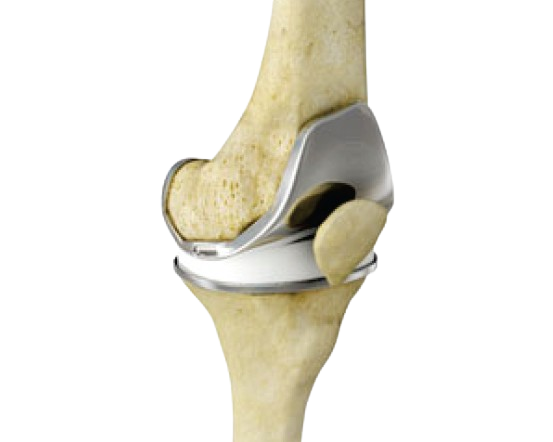
Total knee replacements (Arthroplasty)
Knee arthroscopy involves inserting a camera into the knee and cleaning out diseased areas and replacing with metal and plastic parts. This remains the gold standard in treating end stage knee osteoarthritis

Partial knee replacement
In cases where only one part of the knee is affected, Partial Knee Replacement (Unicompartmental Arthroplasty) may be recommended. This approach preserves more of the natural knee by only replacing the damaged compartment, often resulting in a faster recovery and more natural movement.
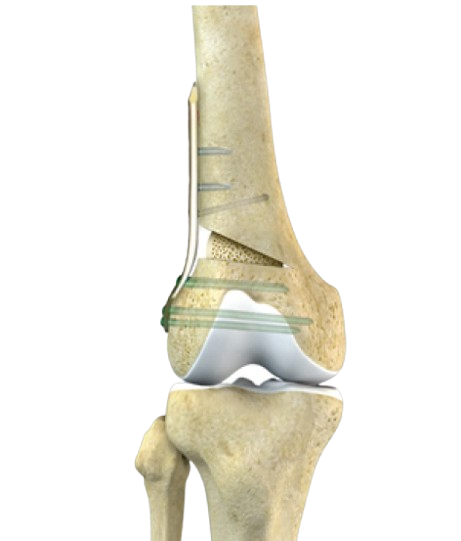
Knee Osteotomy (Tibial or Femoral Osteotomy)
Suitable for patients that have experienced wear and tear on one side of their knee joint and have poor knee alignment. A piece of natural bone or artificial bone material is either removed or added to shift pressure onto the good side of the knee reducing pressure on the bad side.
Dr Manjra is trained to perform the “traditional” approaches as well as the minimally invasive muscle sparing Direct Anterior Approach (DAA). Dr Manjra also teaches other surgeon how to perform knee replacements.
Knee Replacement Components
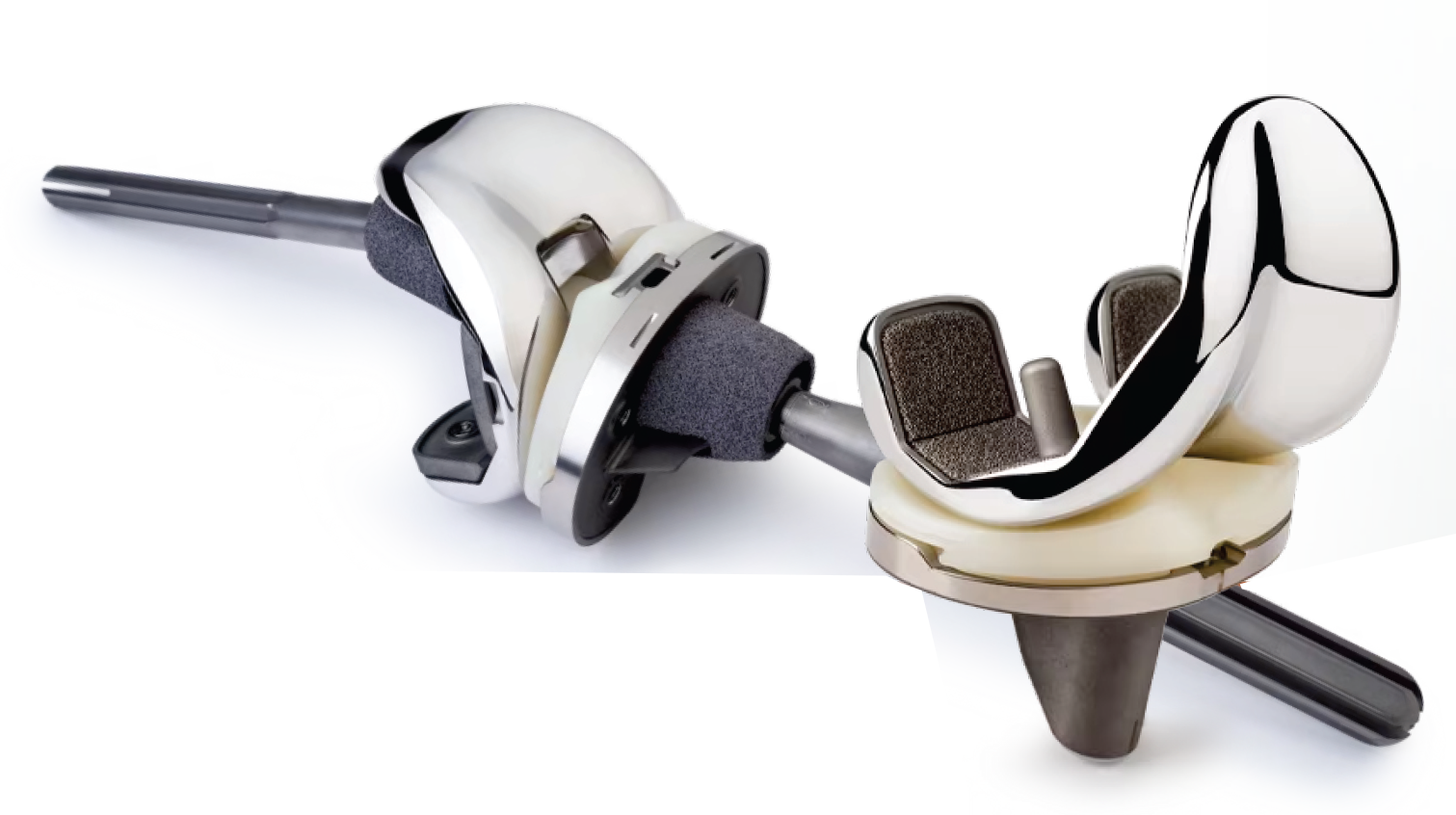
A total knee replacement involves removing cartilage and some bone from all parts of the joint and replacing them with metal and plastic components. Dr. MA Manjra uses bone-preserving techniques to leave as much bone intact as possible.
Preparation before surgery
These are general lifestyle and health checks required as soon as you have decided to go for surgery

You have decided to go ahead with surgery, preparation will require some lifestyle changes which will:
- Reduce your risk of complications
- Improve long-term health
- Prevent serious illness while you recover
This will involve blood tests and medical clearance.
Checklist
Stop smoking.
Maintain a healthy weight.
Engage in regular exercise.
Report any suspicious skin lesions or possible
infections.
Medication & Supplement Disclosure
Your healthcare team will need to know off all the chronic and medication.
- Blood-thinning medication
- Herbal and complementary remedies
- Dietary supplements,
- Over the counter medication.
- Medication for chronic illness such as high blood pressure (hypertension) and blood sugar
(diabetic)
If you are female
- You may do a pregnancy test. As some procedures involve x-rays or medications that can be harmful to unborn babies.
- Sometimes the test does not show an early- stage pregnancy so let the healthcare team know if you could be pregnant.
Prepare your home for after surgery
Arrange furniture strategically for improved mobility
Remove potential tripping hazards such as throw rugs, wires, and unsupportive furniture.
Stay mindful of uneven floors and steps.
Choose chairs with arms and high, firm seats for better support.
Keep frequently used items within easy reach.
Ensure comfortable, easy-to-remove clothing
Use nonslip strips in the bath or shower.
install a raised toilet seat.
Consider confining pets to specific areas to minimize the risk of falls.
Use a carry-along bag for walker or crutches.
Pre-Surgery Pateint Process
1. Consultation and Imaging
Schedule a consultation with Dr. MA Manjra. Complete required X-rays.
2. Pre-Surgery Tests and Clearance
Complete blood tests and obtain medical clearance from the anaesthetist.
3. Decision Making
Decide to proceed with the surgery.
4. Family Meeting
Arrange a meeting with family to address any
concerns about the surgery if required.
5. Authorization and Quotes
Obtain authorization from your medical aid or request a quote if you are a private patient.
Be aware that medical aid plans may require
additional reports or motivations, potentially delaying the surgery.
6. Surgery Date Confirmation
Confirm the scheduled date for the surgery.
7. Medication Instructions
Confirm when to stop taking blood-thinning
medications (e.g., Aspirin, Ecotrin, Warfarin, Plavix). Note: Failure to stop these medications in time may result in the surgery being postponed.
8. Fasting Instructions
- Fast (no food) for 6 hours prior to surgery.
- You may drink clear liquids (tea or coffee without milk, clear apple juice) up to 2.5 hours beforesurgery.
Knee Replacement Procedure
The Day Of Surgery
After Admission
Checks will be performed to ensure the correct
operation on the right side
Confirm your name and procedure with the
surgeon.
Keep warm around the time of operation,
informing the healthcare team if you feel cold.
If you are female the healthcare team may do a
pregnancy test
Anaesthetist
Your anaesthetist will discuss anesthesia for
before and after surgery.
The Operation
You will be given antibiotics during the
operation to reduce the risk of infection.
The operation usually takes 60 to 90 min.
If other parts of the knee is damaged, you may have to have a total knee replacement instead.
Dr. Manjra will make a cut the front of your knee and remove the damaged area of the knee joints.
He will then insert an artificial joint made of metal, plastic, ceramic, or a combination of these materials.
The implant is fixed into the bone using acrylic cement or special coatings that bond directly to the bone.
Dr. Manjra will close your skin with absorbable stitches and tissue glue.
Recovery after surgery
In Hospital
After the operation you will be transferred to the recovery area and then to the ward.
You will usually have an x-ray to check the position of your knee replacement.
Good pain relief is important to help you to recover. If you are in pain, let the healthcare team know.
Keep your wound dry and use a waterproof dressing when you have a bath or shower.
Recovery at home
To reduce the risk of a blood clot make sure you take your blood thinning medication and stay well hydrated.
You will need to use walking aids until you can walk well without them.
Regular exercise should help you to return to normal activities as soon as possible.
Do not drive a car or ride a bike until you can control your vehicle, including in an emergency. Most patients can return to driving in about 6 weeks.
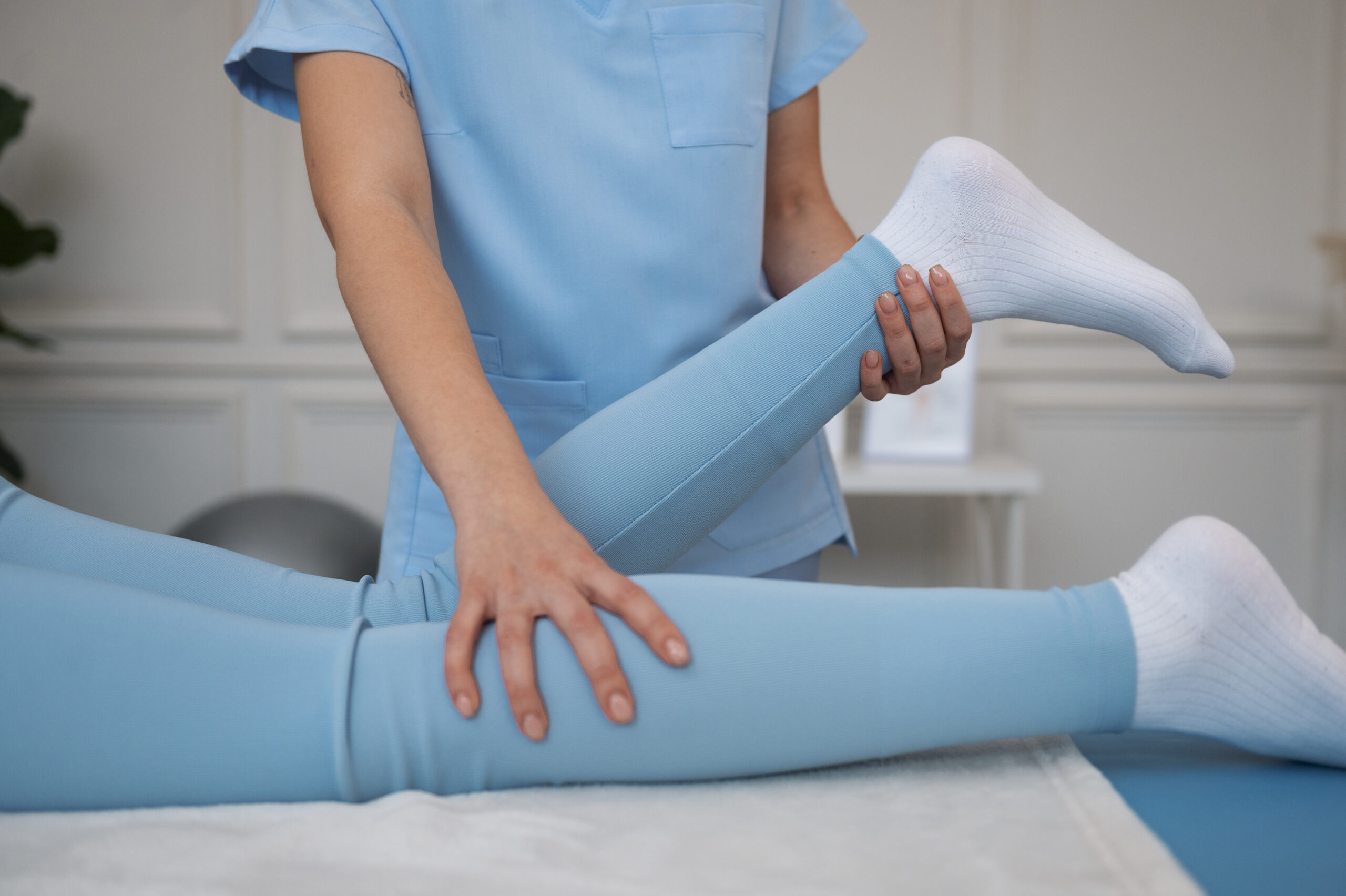

Physiotherapy in hospital
Getting out of bed and walking is an important
part of your recovery.
The physiotherapist will help you to start
walking using crutches or a walking frame,
usually on the day of surgery or the next day.
Your surgeon or the physiotherapist will tell you
how much weight you can put on your leg.
Returning to normal activities
To reduce the risk of a blood clot, make sure you
carefully follow the instructions of the healthcare team if you have been given medication or need to wear special stockings.
The healthcare team will tell you when you can
return to normal activities.
To reduce the risk of problems, it is important to look after your new knee as you are told.
You will need to use walking aids until you can
walk well without them.
Regular exercise should help you to return to normal activities as soon as possible.
Do not drive a car or ride a bike until you can control your vehicle, including in an emergency
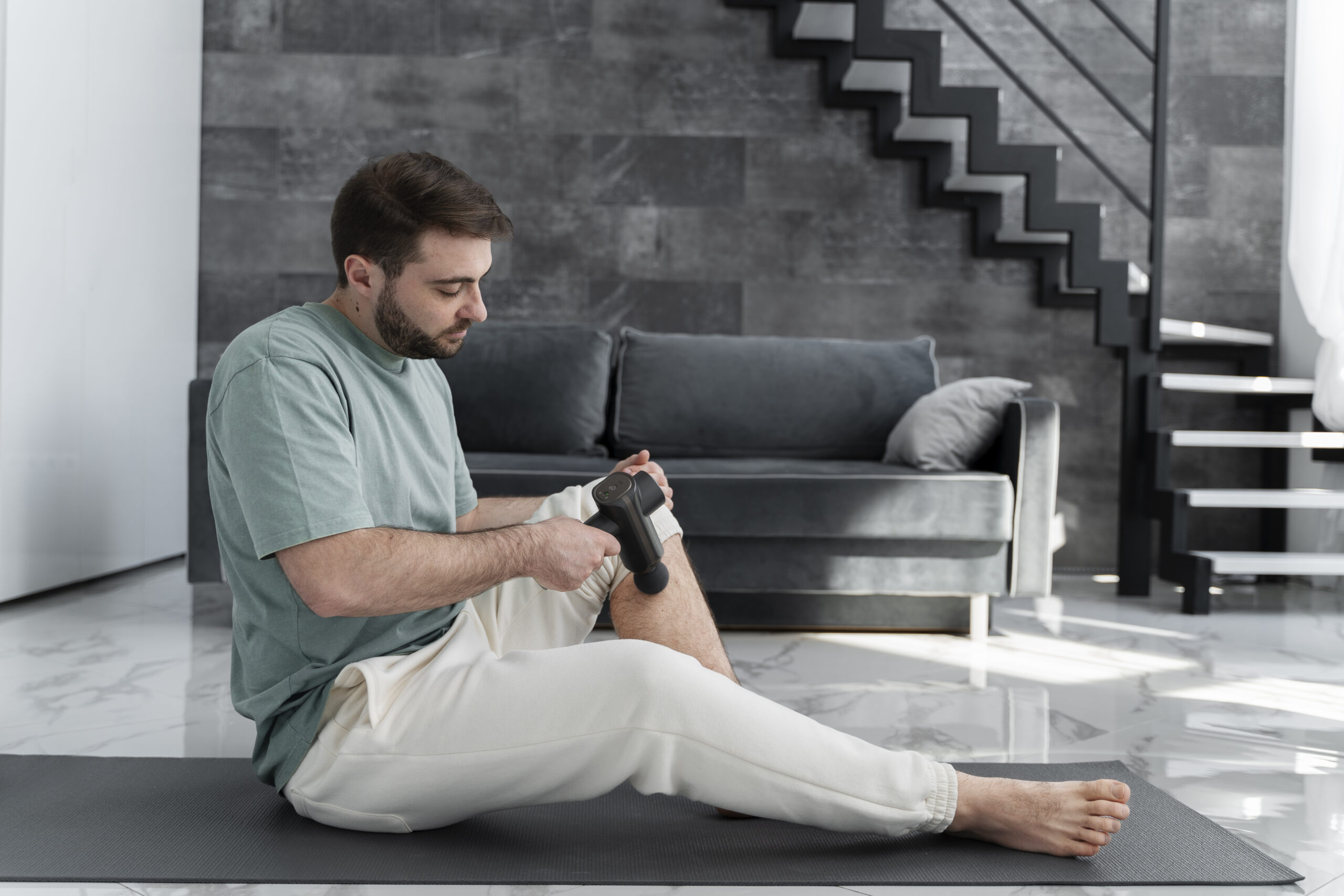
Living with a Knee Replacement
While most recover well with reduced pain and improved mobility, consider the following.
An artificial knee may never feel the same as a normal knee.
A knee replacement can wear out with time. This depends on your body weight, activity and care. Knee replacements are expected to last at least 15-20 years.
Excessive activity or weight may speed up this normal wear and may cause the knee replacement to loosen and become painful. Therefore, most surgeons advise against high-impact activities.
What happens if I don’t have surgery?
Arthritis can be debilitating
While knee arthritis itself is not life- threatening, it can significantly reduce your mobility and quality of life, progressively worsening over time. Routine activities like walking, climbing stairs, getting dressed, or even standing up can become painful or nearly impossible.
Chronic use of pain medication
Chronic use of pain medications to manage symptoms may lead to side effects such as dependency, stomach ulcers, and damage to vital organs like the liver or kidneys.
Knee replacement surgery is Cardioprotective
Knee arthritis has also been linked to increased risks of heart disease and diabetes. Studies have shown that knee replacement surgery may provide cardioprotective benefits, reducing the likelihood of heart attacks or strokes.
Multiple large-scale studies conducted in Canada and the United Kingdom, including those published in the British Medical Journal, have demonstrated a strong connection between joint arthritis and cardiovascular
events.
Are knee replacements successful?
Total knee replacement surgery, first performed in 1968, has seen significant improvements in materials and techniques, making it one of the most successful medical procedures. Globally, over 1 million surgeries are performed annually, with more than 700,000 in the U.S. In South Africa, this surgery is increasingly common, providing effective relief for patients with advanced knee arthritis.
